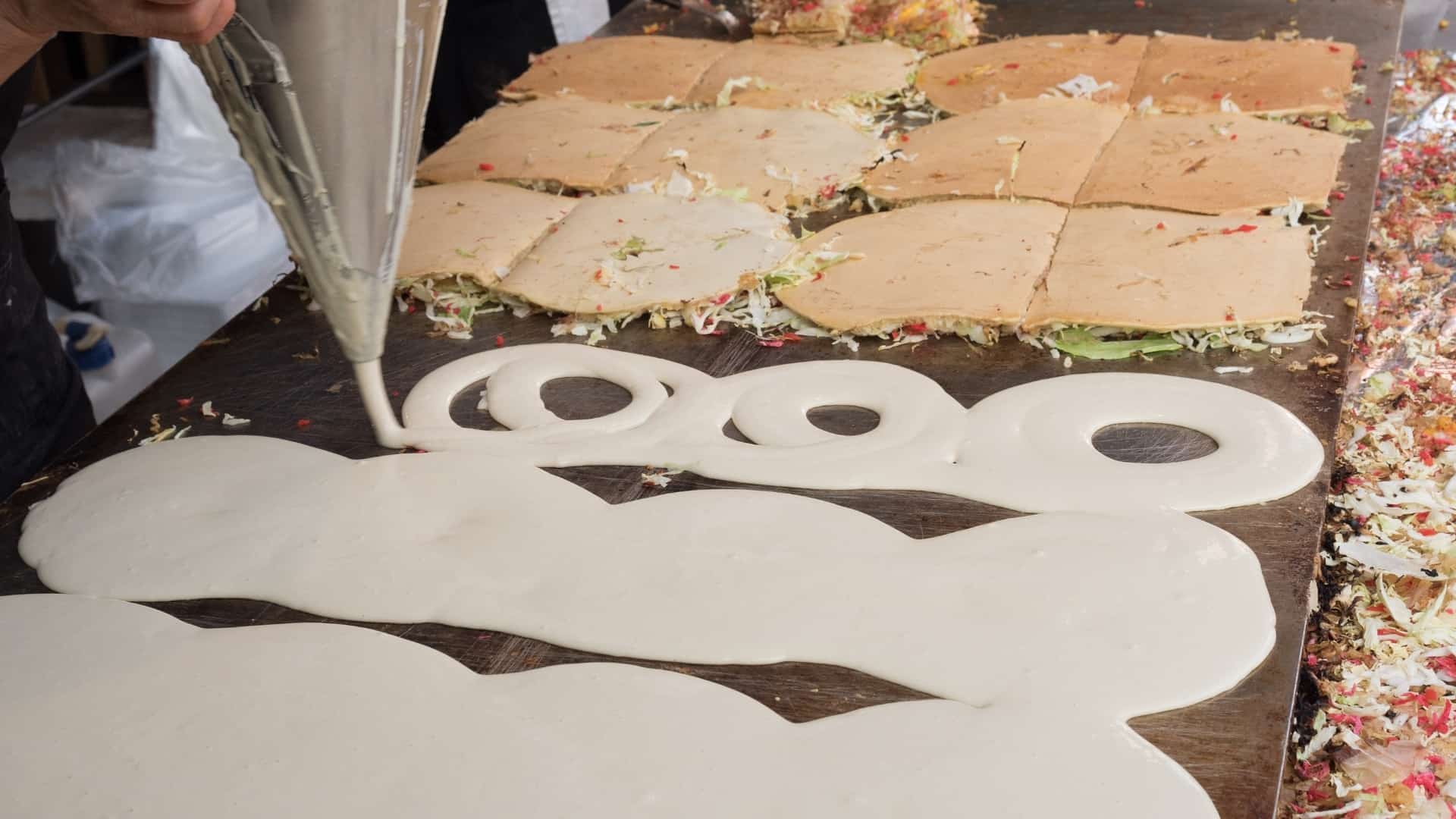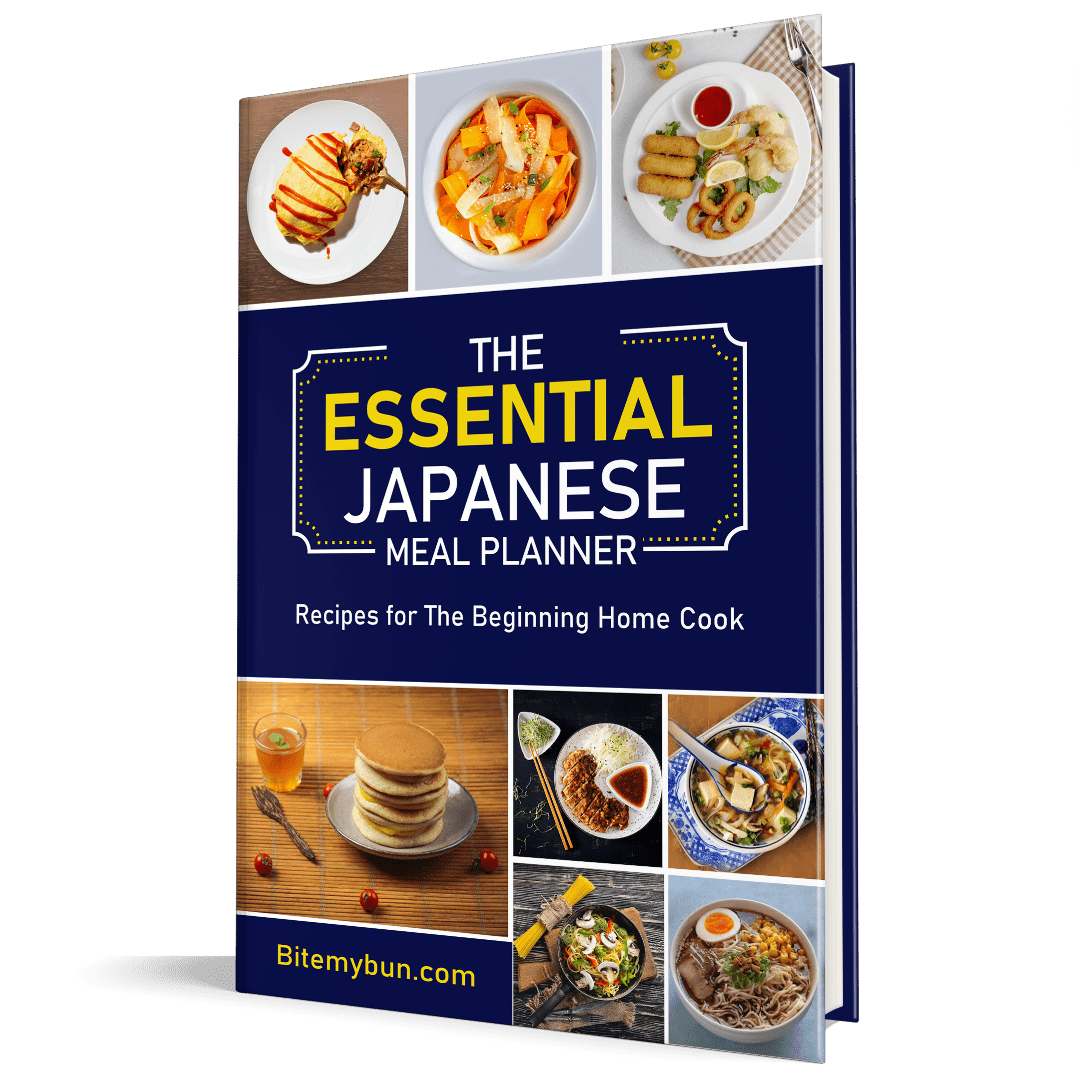Okonomiyaki flour: what is it & how to use it
Picture this; you’re in the mood for some okonomiyaki, so you gather all your favorite veggies, and pick out the perfect cabbage.
You lay out all the ingredients, and you realize…you’re out of okonomiyaki flour!
This is a perfectly normal situation, and I understand your pain.

Okonomiyaki translates literally to “whatever you like best”. So technically, you can add the available ingredients at your place and make your own version of it!
So what’s so special about okonomiyaki flour?
Today I’ll be discussing exactly that. Additionally, I’ll mention the best alternatives to okonomiyaki flour that you can use to get just the same (or even better) results.
So read on ahead to find out!
First, see how okonomiyaki is made in an authentic Japanese restaurant:

Check out our new cookbook
Bitemybun's family recipes with complete meal planner and recipe guide.
Try it out for free with Kindle Unlimited:
Read for freeWhat is okonomiyaki flour?
Traditionally, okonomiyaki flour is made from unbleached wheat flour and soy flour. There’s the addition of leavening agents and seasoning that add a kick of flavor to the flour itself.
This flour is made to rise independently and form a thick texture without additional ingredients like nagaimo (mountain yam).
Initially, the okonomiyaki recipe was made with a blend of mountain yam mashed up, and slowly, okonomiyaki flour replaced it as a more accessible choice for everyone.
Some people assume that using okonomiyaki flour is cheating on the original recipe.
However, the aura of this dish lies in its versatile nature. You can make it whatever you want it to be!
Flavors and varieties of okonomiyaki flour
Okonomiyaki flour comes in a wide variety of flavors. Each flavor has its own leavening agent and seasoning.
Traditional okonomiyaki used Japanese mountain yam and wheat flour to get a thick and glutinous mix.
To mimic that texture, the modern interpretation of okonomiyaki flour combines yam flour within the wheat flour, alongside other seasonings like shrimps and scallops. Some common brands you can purchase include:
- Nisshin
- Nagatanien
- Marutomo
- Otafuku
That being said, there’s no “correct” method of making okonomiyaki, so you can easily swap out ingredients with ones at your home.
So if you’re short on okonomiyaki flour, that’s completely okay. You can easily switch up the flour with one of these alternatives!
Conclusion
So what flour should I use?
The answer is, any flour works perfectly fine! The whole essence of okonomiyaki lies in making do with whatever resources you have.
Whether you have okonomiyaki flour, plain flour, or even the original yam recipe down, the dish’s authenticity isn’t compromised.
I hope this article’s helped guide you about okonomiyaki flour and all the alternatives you can use in place of it.
Just remember to have fun and add whatever your heart desires. Happy cooking!
Check out our new cookbook
Bitemybun's family recipes with complete meal planner and recipe guide.
Try it out for free with Kindle Unlimited:
Read for freeJoost Nusselder, the founder of Bite My Bun is a content marketer, dad and loves trying out new food with Japanese food at the heart of his passion, and together with his team he's been creating in-depth blog articles since 2016 to help loyal readers with recipes and cooking tips.
